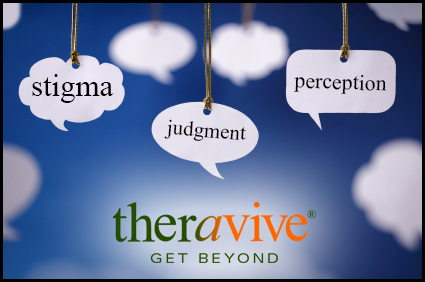 Judgement and Stigma
Judgement and Stigma
For individuals with mental illness, dealing with all of the associated problems is difficult. Having to face the judgment from themselves and from others can often compound the problem. Mental illness is still something that people do not generally want to talk about in positive and productive ways. The silence is often born of the worry about the stigma attached to it. There is a lot of risk involved in revealing a mental health problem in the workplace or even among friends and family. Much of this comes from lack of education, misinformation and misunderstanding. Getting mental illness and the mentally ill out of the shadows has become the focus lately of a number of advocacy groups
Social and Self Stigma
Davey (2013) describes two types of stigma known as social stigma and self-stigma. The first refers to the ways that others judge, blame and avoid those who are mentally ill. The second refers to the individual’s tendency to internalize the judgment, and blame and to isolate themselves to avoid upsetting others. Both types of stigma can lead to people avoiding treatment even when they recognize a need for it. The Mayo Clinic (n.d.) point out the fact that there is real potential harm to those with mental illness. This can take various forms.
- Avoidance of treatment- When stigma is possible, many people will avoid being labeled as mentally ill so that they can avoid the discrimination that may result.
- Interpersonal issues- Mentally ill individuals often face problems with family and friends, in the workplace, and in the community.
- Loss of opportunity- Because of stigma, some people have a hard time with employers, are unable to pursue education, or may have a difficult time finding a housing.
- Being attacked or harassed- There are people who have been treated hatefully because of their perceived difference or threat due to their mental illness.
- Inadequate health care- Insurance companies often cover mental illnesses differently than they do physical illnesses. This may mean lack of coverage for counseling, higher co-pays for psychiatrists, and a lack of coverage for prescribed medications.
- Self-esteem issues- Stigma often makes people feel badly about themselves. The world is telling them that they cannot accomplish things, and being labeled runs the risk of the person becoming the disease which is detrimental.
Suffering Due To Mental Illness
Feldman and Crandall (2007) argue that there are two types of suffering that are the result of mental illness. First, dealing with symptoms and treatment on a daily basis can be exhausting. Second, people’s attitudes and judgments can be even more exhausting. They cite a history of stigma dating back to the last century. This stemmed from the general belief, real or imagined, that individuals with a mental illness are more likely to be violent and should thus be avoided or be joked about. In their study, they found that three factors were likely to increase the likelihood of stigma. There is a perception of danger, judgment about responsibility, and rarity of the diagnosis. So, for example, if people are seen to be responsible for their illness, there is more stigma attached to that diagnosis. In regard to rarity, their study found the perception by others that a disorder is rare means that it is more serious and should be avoided.
 Public Health vs. Social Justice
Public Health vs. Social Justice
Corrigan, Watson, Byrne and Davis (2005) reflected on the idea of stigma prevention through the lens of public health vs. using the lens of social justice. They stated that while making it a public health issue can be helpful, it can sometimes make stigma worse because of the focus on difference. From a social justice angle, they argue that it humanizes the problem, and that it offers opportunities to increase understanding and awareness. They suggest that it is better to use both approaches as a prevention technique. Shim and Rust (2013), seem to agree with their position indicating that the best way to fight stigma is to integrate behavioral and physical health care.
Bringing it to Light
Overall, the general sense is that stigma is dangerous to those living with a mental illness. By decreasing stigma, it increases the chances that more people will feel comfortable with seeking treatment. There are a number of ways to approach stigma around mental illness. Information and education are essential. The more understanding there is about the issue, the more we can reduce the stigma. Lately, it has become important to normalize mental illness by speaking up about it. There are some people living with mental illness who are not afraid to talk about it, and every time it is brought out of the shadows, it becomes a little less frightening.
_________________________________________________________________________________________________________________________________
Corrigan, P. W., Watson, A. C., Byrne, P., & Davis, K. E. (2005). Mental illness stigma: Problem of public health or social justice? Social Work, 50(4), 363-8.
Davey, G.C.L. (2013). Why we worry. Psychology Today. Retrieved from http://www.psychologytoday.com/blog/why-we-worry/201308/mental-health-stigma
Feldman, D. B., & Crandall, C. S. (2007). Dimensions of mental illness stigma : What About Mental Illness causes social rejection? Journal of Social and Clinical Psychology, 26(2), 137-154.
Mayo Clinic (n.d.) Mental health: Overcoming the stigma of mental illness. Retrieved from http://www.mayoclinic.org/diseases-conditions/mental-illness/in-depth/mental-health/art-20046477
Shim, Ruth,M.D., M.P.H., & Rust, George,M.D., M.P.H. (2013). Primary care, behavioral health, and public health: Partners in reducing mental health stigma. American Journal of Public Health, 103(5), 774-776.
About the Author
 Cathy England, MA
Cathy England, MACathy holds a Master’s degree in Psychology and has 13 years of work experience in counseling and social work. Cathy is an advocate for mental health awareness and enjoys educating people about mental health and the ways that it impacts people and communities. Most of her experience has been in work with court dependent or delinquent adolescents and their families. Cathy has also worked as a volunteer as a Court Appointed Special Advocate (CASA) for children under court supervision.
Professional Website:
crawfordcasa.org